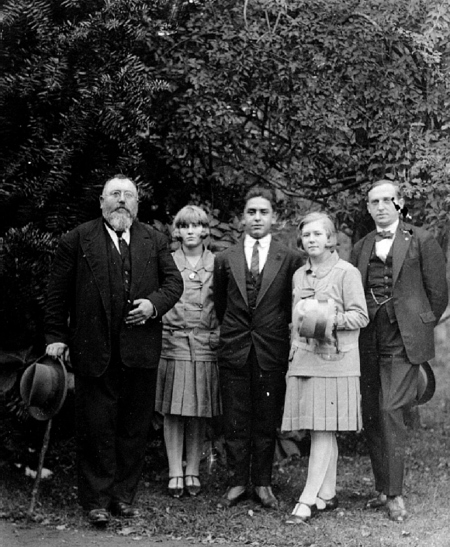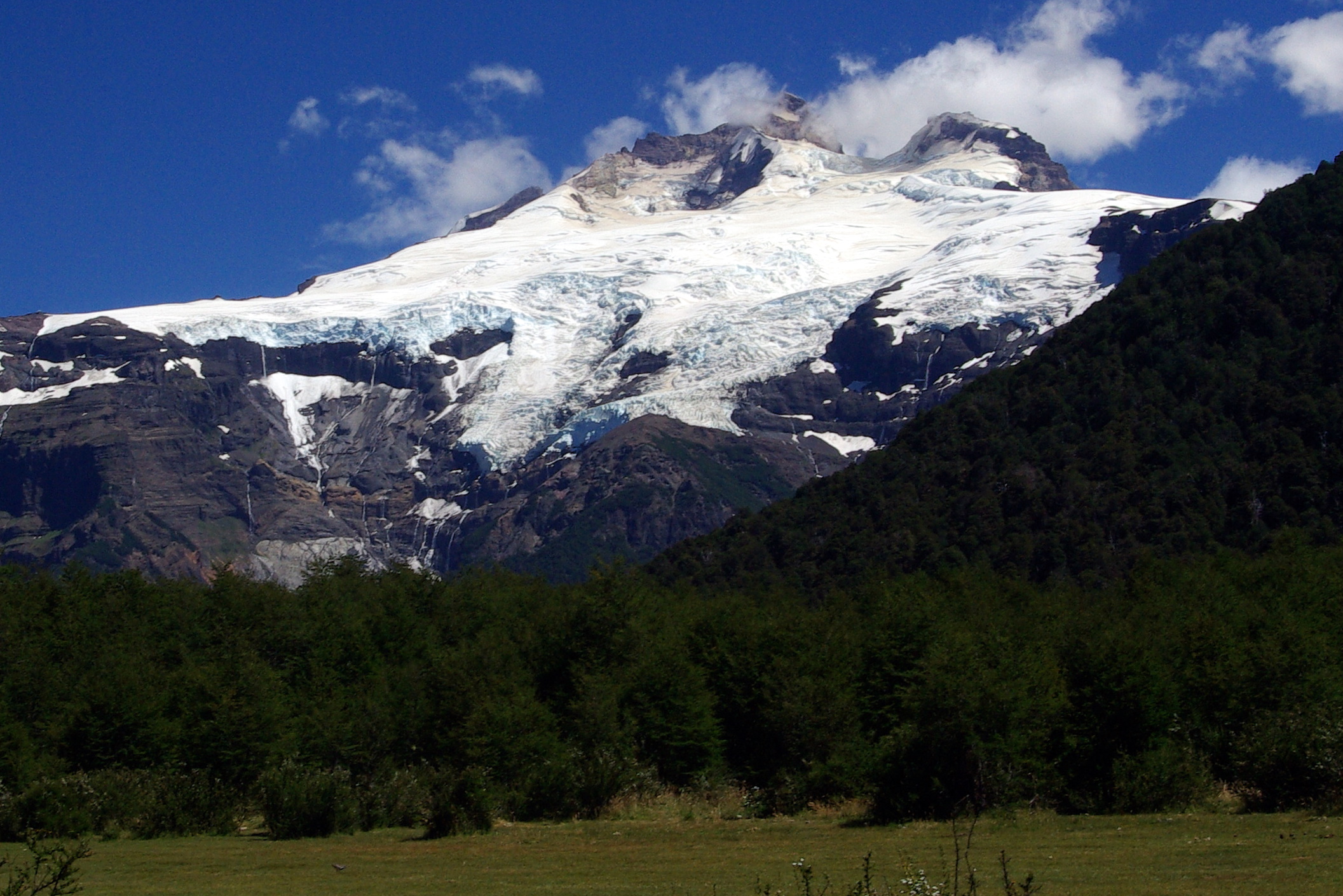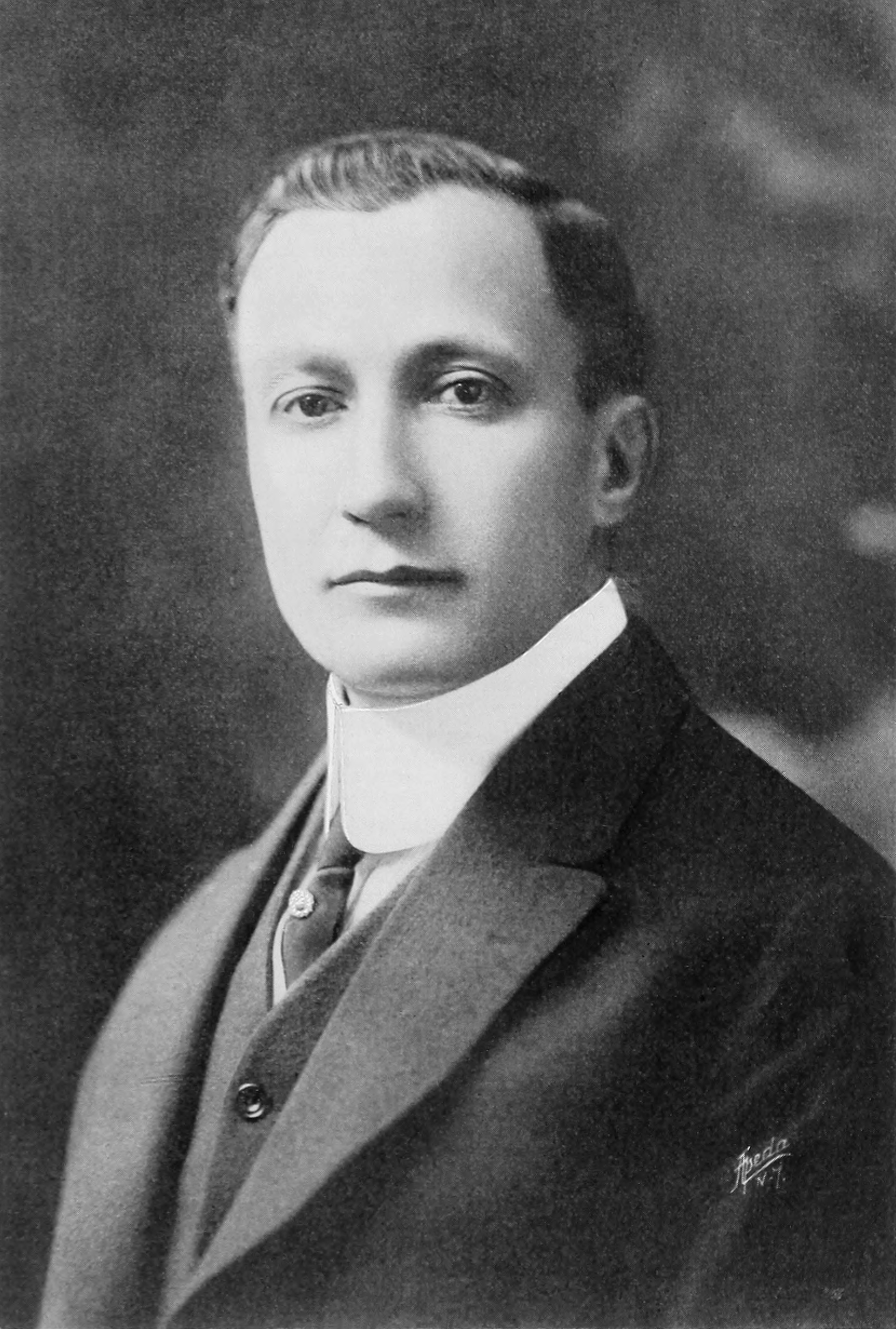|
Primo Capraro
Primo Modesto Capraro (Belluno, Italy, 1873 – San Carlos of Bariloche, Argentina, 1933) was an Italian businessman constructor based in southern Argentina. He was a pioneer in the trade, the industry and the tourism of the region of San Carlos of Bariloche. Biography He studied in the industrial school of his home town and loaned military service like pontonier, devoting since, to carpentry and construction. He promised marriage to his girlfriend Matilde for after a trip to Latin America, where he would try to enrich himself quickly; after failing on his attempt in Mexico, Santiago of Chile and the city de Mendoza – where he worked for a rail company – he traveled to the region of Bariloche to look for gold. He arrived to the zone of lake Nahuel Huapi, in April 1903, and installed himself in the lake Correntoso. There he devoted to carpentry and to the construction in wood, and was the constructor of the greater part of the first houses of San Carlos of Bariloche. Whe ... [...More Info...] [...Related Items...] OR: [Wikipedia] [Google] [Baidu] |
Belluno
Belluno (; ; ) is a town and province in the Veneto region of northern Italy. Located about north of Venice, Belluno is the Capital (political), capital of the province of Belluno and the most important city in the Eastern Dolomites region. With its roughly 36,000 inhabitants, it is the largest populated area of Valbelluna. It is one of the 15 municipalities of the Dolomiti Bellunesi National Park. Geography The ancient city of Belluno rises above a cliff spur near the confluence of the Torrente Ardo and the Piave River. To the north is the imposing Schiara range of the Dolomites, with the famous ''Gusela del Vescovà'' (Bishopric's needle), and mountains Mount Serva, Serva and Monte Talvena, Talvena rising above the city. To the south, the Venetian Prealps separate Belluno from the Venetian Plain, Venetian plain. Also to the south is the Nevegal, in the Castionese area, a skiing resort. History The name of the city is derived from Celtic languages, Celtic ''belo-dunum'' ... [...More Info...] [...Related Items...] OR: [Wikipedia] [Google] [Baidu] |
Bariloche
San Carlos de Bariloche (from the Mapuche name ''Vuriloche'', meaning "people from the other side of the mountain"), commonly known simply as Bariloche (), is the largest city in the Argentine province of Río Negro and the seat of the department of the same name. It is located in the foothills of the Patagonian Andes on the southern shore of Nahuel Huapi Lake, near the border with Chile. With a population of 135,755 according to the 2022 census, Bariloche is a mid-sized city by national standards but holds significant regional importance, being not only the most populous city in its province but also the largest in the Patagonian Andes, and the third largest in the entire Argentine Patagonia following Neuquén and Comodoro Rivadavia. Its urban zone is characterized by its low density and has an area of more than , extending longitudinally from east to west for about . Bariloche's economy is heavily centered on tourism, making it the country's third most visited destinatio ... [...More Info...] [...Related Items...] OR: [Wikipedia] [Google] [Baidu] |
Mendoza, Argentina
Mendoza (), officially the City of Mendoza (), is the capital of the Provinces of Argentina, province of Mendoza Province, Mendoza in Argentina. It is located in the northern-central part of the province, in a region of foothills and high plains, on the eastern side of the Andes. As of the , Mendoza had a population of 115,041 with a metropolitan population of 1,055,679, making Greater Mendoza the fourth largest census metropolitan area in the country. National Route 7 (Argentina), Ruta Nacional 7, the major road running between Buenos Aires and Santiago, Chile, Santiago, runs through Mendoza. The city is a frequent stopover for climbers on their way to Aconcagua (the highest mountain in the Western and Southern Hemispheres) and for adventure travelers interested in mountaineering, hiking, horse riding, rafting, and other sports. In the winter, skiers come to the city for easy access to the Andes. Two of the main industries of the Mendoza area are olive oil production and Argen ... [...More Info...] [...Related Items...] OR: [Wikipedia] [Google] [Baidu] |
Nahuel Huapi Lake
Nahuel Huapi Lake () is an Andean lake in the lake region of northern Patagonia between the provinces of Río Negro and Neuquén, in Argentina. The lake has a northwest-southeast elongated shape and complex geography with several branches, peninsulas and islands. The city of Bariloche is on the southern shore of the lake and the town of Villa La Angostura lies on its northwestern shores. The lake is wholly inside Nahuel Huapi National Park. It is one of the largest lakes in northern Patagonia. It is drained by Limay River and it is part of the watershed of Negro River which discharges into the South Atlantic. Additionally, the northwest shore of the lake is the site of an isolated house sometimes alleged to have been occupied by Nazi dictator Adolf Hitler following his purported escape from Berlin in April 1945. Etymology The name of the lake derives from the toponym of its major island in Mapudungun (Mapuche language): "Island of Puma", from ''nahuel'', 'puma', and ... [...More Info...] [...Related Items...] OR: [Wikipedia] [Google] [Baidu] |
Otto Meiling
Otto Meiling (1902–1989) was a German-born mountaineer who achieved many first ascents in Nahuel Huapi National Park and the surrounding area. Meiling left Bavaria for Buenos Aires in his early twenties, working as a labourer, learning the skills of carpentry and construction. He gained a taste for adventure, then moved to San Carlos de Bariloche, at the time a small village, in the Lakes District, near Cerro Catedral. There, he began exploring the nearby peaks with friends, mainly other German immigrants. He soon founded the Club Andino de Bariloche with them, a highly successful mountaineering club that still exists. After making a number of first ascents in the area, he was introduced to the new sport of skiing, which he became passionate about, making many long ski trips, and beginning to teach skiing, and manufacturing skis and bindings. At one point he returned to his home land, visiting his family, but also receiving further training in skiing, mountaineering, and ... [...More Info...] [...Related Items...] OR: [Wikipedia] [Google] [Baidu] |
Skiing
Skiing is the use of skis to glide on snow for basic transport, a recreational activity, or a competitive winter sport. Many types of competitive skiing events are recognized by the International Olympic Committee (IOC), and the International Ski and Snowboard Federation (FIS). History Skiing has a history of almost five millennia. Although modern skiing has evolved from beginnings in Scandinavia, it may have been practiced more than 100 centuries ago in the Altai Mountains, according to an interpretation of ancient paintings. However, this continues to be debated. The word "ski" comes from the Old Norse word "skíð" which means to "split piece of wood or firewood". Asymmetrical skis were used in northern Finland and Sweden until at least the late 19th century. On one foot, the skier wore a long straight non-arching ski for sliding, and a shorter ski was worn on the other foot for kicking. The underside of the short ski was either plain or covered with animal skin to aid ... [...More Info...] [...Related Items...] OR: [Wikipedia] [Google] [Baidu] |
Villa La Angostura
Villa La Angostura (Spanish for ''Town of the Narrowing'') is a town located in the Los Lagos Department in the south of the Argentine province of Neuquén, on the northwest shore of the Nahuel Huapi Lake. Nestled in the northern part of the Nahuel Huapi National Park, and surrounded by lakes, forests and mountains, it is considered to be one of the most beautiful locations in the mountainous parts of Patagonia; earning it the nickname ''Garden of Patagonia'' (Spanish: ''Jardín de la Patagonia''). Just located a couple of kilometers away from the border with Chile through the Cardenal Antonio Samoré Pass and with other nearby places such as Bariloche and San Martín de los Andes, it forms a popular tourist corridor during both summer and winter. Geography The town is located halfway between the cities of San Martín de los Andes and Bariloche, inside the Nahuel Huapi National Park, very close to the isthmus of the Quetrihue Peninsula, where the Los Arrayanes National Park a ... [...More Info...] [...Related Items...] OR: [Wikipedia] [Google] [Baidu] |
Italian Emigrants To Argentina
Italian(s) may refer to: * Anything of, from, or related to the people of Italy over the centuries ** Italians, a Romance ethnic group related to or simply a citizen of the Italian Republic or Italian Kingdom ** Italian language, a Romance language *** Regional Italian, regional variants of the Italian language ** Languages of Italy, languages and dialects spoken in Italy ** Italian culture, cultural features of Italy ** Italian cuisine, traditional foods ** Folklore of Italy, the folklore and urban legends of Italy ** Mythology of Italy, traditional religion and beliefs Other uses * Italian dressing, a vinaigrette-type salad dressing or marination * Italian or Italian-A, alternative names for the Ping-Pong virus, an extinct computer virus * ''Italien'' (magazine), pro-Fascist magazine in Germany between 1927 and 1944 See also * * * Italia (other) * Italic (other) * Italo (other) * The Italian (other) The Italian may refer to: * ''The Italia ... [...More Info...] [...Related Items...] OR: [Wikipedia] [Google] [Baidu] |
Argentine Businesspeople
Argentines, Argentinians or Argentineans are people from Argentina. This connection may be residential, legal, historical, or cultural. For most Argentines, several (or all) of these connections exist and are collectively the source of their being Argentine. Argentina is a multiethnic society, multiethnic society, home to people of various Ethnicity, ethnic, Race (human categorization), racial, Religion, religious, Religious denomination, denomination, and Nationality, national origins, with the majority of the population made up of Old World immigrants and their descendants. As a result, Argentines do not equate their nationality with ethnicity, but with citizenship and allegiance to Argentina. Aside from the indigenous population, nearly all Argentines or their ancestors immigrated within the past five centuries. Among countries in the world that have received the most immigrants in modern history, Argentina, with 6.6 million, ranks second to the United States (27 million), ... [...More Info...] [...Related Items...] OR: [Wikipedia] [Google] [Baidu] |
1933 Deaths
Events January * January 11 – Australian aviator Sir Charles Kingsford Smith makes the first commercial flight between Australia and New Zealand. * January 17 – The United States Congress votes in favour of Philippines independence, against the wishes of U.S. President Herbert Hoover. * January 28 – "Pakistan Declaration": Choudhry Rahmat Ali publishes (in Cambridge, UK) a pamphlet entitled ''Now or Never; Are We to Live or Perish Forever?'', in which he calls for the creation of a Muslim state in northwest India that he calls "Pakistan, Pakstan"; this influences the Pakistan Movement. * January 30 ** Nazi Party leader Adolf Hitler is appointed Chancellor of Germany (German Reich), Chancellor of Germany by President of Germany Paul von Hindenburg. ** Édouard Daladier forms a government in France in succession to Joseph Paul-Boncour. He is succeeded on October 26 by Albert Sarraut and on November 26 by Camille Chautemps. February * February 1 – Adolf Hitle ... [...More Info...] [...Related Items...] OR: [Wikipedia] [Google] [Baidu] |
1873 Births
Events January * January 1 ** Japan adopts the Gregorian calendar. ** The California Penal Code goes into effect. * January 17 – American Indian Wars: Modoc War: First Battle of the Stronghold – Modoc Indians defeat the United States Army. February * February 11 – The Spanish Cortes deposes King Amadeus I, and proclaims the First Spanish Republic. * February 12 ** Emilio Castelar, the former foreign minister, becomes prime minister of the new Spanish Republic. ** The Coinage Act of 1873 in the United States is signed into law by President Ulysses S. Grant. Coming into effect on April 1, it ends bimetallism in the U.S., and places the country on the gold standard. * February 20 ** The University of California opens its first medical school in San Francisco. ** British naval officer John Moresby discovers the site of Port Moresby in Papua New Guinea, and claims the land for Britain. March * March 3 – Censorship: The United States Congress e ... [...More Info...] [...Related Items...] OR: [Wikipedia] [Google] [Baidu] |





